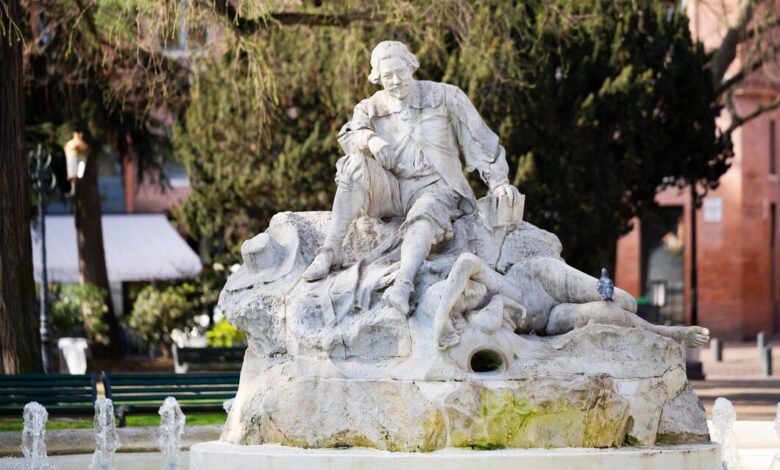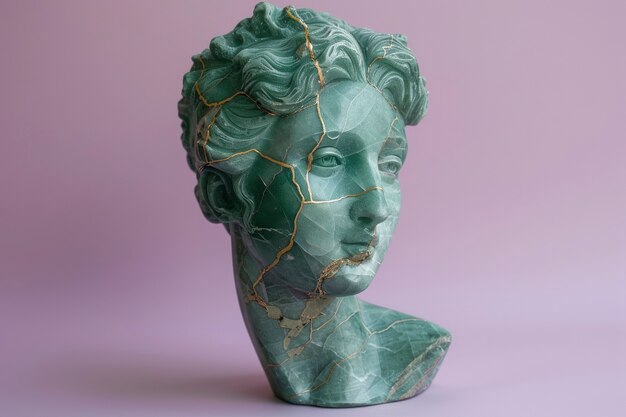Venus Webster Alabaster: Exploring the Artistic Legacy

Venus Webster Alabaster—an intriguing combination of terms that bridges mythology, art, and history. But what exactly does it mean? Why is it so significant in the world of classical and modern art? In this article, we’ll dive deep into the origins of Venus, alabaster, and how these two elements intertwine to create an artistic legacy that has spanned centuries.
What is Venus Webster Alabaster?
Venus Webster Alabaster refers to statues and sculptures crafted from alabaster stone, often representing the Roman goddess Venus, who is synonymous with beauty, love, and fertility. This term highlights the artistic practice of creating Venus sculptures from alabaster, a soft, translucent stone that has been cherished by artists for millennia due to its beauty and ease of carving.
Origin of Venus Webster Alabaster
Alabaster itself dates back to ancient times, with roots in both Egyptian and Mesopotamian art. The Romans and Greeks, inspired by their mythological gods and goddesses, adopted alabaster to create beautiful, detailed sculptures. Venus, the Roman goddess equivalent to the Greek Aphrodite, was a popular figure for these artworks due to her associations with beauty and perfection.
Types of Alabaster
There are two main types of alabaster used in art: calcite alabaster and gypsum alabaster. While both are valued for their aesthetic qualities, they differ in composition. Calcite alabaster is harder and has a more crystalline texture, while gypsum alabaster is softer and easier to carve, often possessing a more polished, translucent appearance.
The Myth of Venus
In Roman mythology, Venus is the goddess of love, beauty, and desire. Her image has inspired countless artists throughout history, symbolizing ideals of femininity, grace, and allure. Venus is often depicted in a sensual and beautiful manner, making her the perfect subject for sculptures that seek to convey the essence of beauty itself.

How Venus Became Linked to Alabaster
Venus became closely associated with alabaster because of her representation in classical sculpture. The softness and translucency of alabaster made it ideal for depicting the delicate features of the goddess, allowing artists to craft statues that felt both lifelike and ethereal. The stone’s pale, glowing quality perfectly mirrored the divine beauty Venus symbolized in Roman culture.
The Role of Venus Statues in History
Throughout ancient Rome and Greece, alabaster statues of Venus were seen as symbols of divine beauty. These statues adorned temples, villas, and public spaces, serving not only as art but also as objects of worship. Venus represented fertility, love, and prosperity, making her image a common feature in both public and private spaces.
Venus Statues in Modern Art
Even in modern times, Venus continues to inspire artists, and alabaster remains a favored medium for sculptors. The tradition of crafting Venus sculptures from alabaster lives on, connecting contemporary art with its classical roots. Modern interpretations of Venus may differ in style, but the allure of alabaster remains strong, preserving its place in the artistic world.
Characteristics of Alabaster
Alabaster is a fine-grained, soft stone that comes in a variety of colors, including white, cream, and pink. Its translucent quality gives it a unique glow when exposed to light, making it highly prized by sculptors. The stone is easy to carve, which allows artists to create intricate details, especially when portraying human figures like Venus.

Why Alabaster Was Used for Venus Statues
The choice of alabaster for Venus statues was not purely aesthetic. Its softness and subtle translucency made it the ideal medium for depicting Venus’s otherworldly beauty. Alabaster allowed sculptors to create figures that seemed almost alive, capturing the smooth, soft texture of skin and the delicate features of the goddess in a way that marble or other harder stones couldn’t.
Famous Venus Alabaster Sculptures
Several alabaster sculptures of Venus have gained renown throughout history. One of the most famous is the Venus de Milo, although it is not made of alabaster, it represents the aesthetic many alabaster Venus statues seek to capture. Alabaster Venus statues can be found in various museums and collections worldwide, each showcasing the timeless appeal of this material.
Caring for Alabaster Sculptures
Alabaster is a fragile stone, prone to damage from water and environmental exposure. To preserve alabaster statues, they must be kept in controlled environments, away from moisture and direct sunlight. Regular cleaning with a soft cloth can help maintain their appearance, but great care must be taken to avoid scratching or damaging the delicate surface.
Alabaster in Modern Design
Beyond traditional sculptures, alabaster has found a place in modern interior design, used in everything from lighting fixtures to decorative pieces. Its natural glow makes it a popular choice for contemporary art installations, while its historical connection to Venus adds a layer of depth and meaning to modern works.
The Future of Alabaster in Art
As art continues to evolve, alabaster is likely to remain a cherished medium for sculptors and designers. Its unique properties make it ideal for creating works that capture light and detail in a way few other materials can. With renewed interest in traditional materials, alabaster may see a resurgence in popularity in both classical and modern art forms.
Conclusion
Venus Webster Alabaster represents more than just a combination of words—it encapsulates a rich tradition of art, mythology, and craftsmanship. The use of alabaster to depict Venus not only highlights the beauty of the goddess but also showcases the skill and artistry of the sculptors who chose this material. As alabaster continues to inspire artists today, its connection to Venus ensures its place in the artistic world for years to come.
Read Also: 4690-camp-rd-hamburg-ny-due-for-demolition
FAQs
What is alabaster used for?
Alabaster is commonly used for sculptures, carvings, and decorative art due to its softness and translucent quality.
Why was Venus depicted using alabaster?
Alabaster was used for Venus statues because its smooth texture and delicate appearance perfectly captured the beauty of the goddess.
Is alabaster still used in modern art?
Yes, alabaster remains a popular medium for sculptors and designers, particularly in modern installations and home décor.
How do you care for alabaster sculptures?
Alabaster sculptures should be kept in a dry, controlled environment, away from direct sunlight and moisture to prevent damage.
Where can I find famous Venus alabaster statues?
Famous Venus statues made from alabaster can be found in various museums and private collections worldwide.